Platelet-derived medicine: therapeutic applications
Farmazian doktorea. Biofarmazia, Farmakozinetika eta Farmazia-teknologiako irakasle kolaboratzailea
Farmazia Fakultatea UPV-EHU, Vitoria-Gasteiz
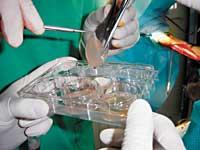
The platelet rich preparation at the clinic began to be used in oral surgery in the 1990s. Dentists wanted to show that the drug from platelets had the ability to promote bone formation, especially to favor oral implants. Thus, in 1998 Robert E. Marx and Eduardo Anitua began several studies in maxillofacial and oral surgery respectively.
Both used preparations of different compositions. Marx, in addition to cow thrombin, added concentrated leukocytes to plasma. For his part, Anitua decided not to use these two components to avoid immunogenic alterations that bovine thrombin and white blood cells could cause in patients. Instead, he used calcium chloride to perform plasma coagulation in 5 or 6 minutes and removed red and white blood cells using a specific centrifugation protocol. Therefore, it is essential to emphasize that not all the preparations tested in research are the same, which sometimes explains why the results are different.
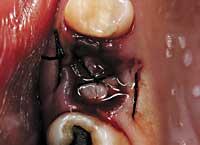
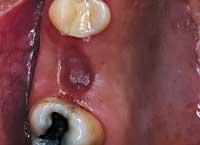

Once the preparation of PRGF was achieved, the next objective of the Anitua was to study the aggregation and function of platelets. In fact, the main component of PRGF is platelets. Thanks to studies conducted in France, he studied and quantified functional molecules that were removed from platelet granules, especially those that were important for tissue regeneration. Despite not knowing the full capacity of the preparation, rich in platelets, Anitua created in 1999 the company Biotechnology Institute. The idea was to extend the therapeutic possibilities of PRGF to everyone. From then on, thanks to Mikel Sánchez, specialist in traumatology and orthopedics, the therapeutic uses of the preparation were expanded, developing the possibility of using it to repair muscles, cartilage and ulcers.
Apps
The therapeutic trajectory of PRGF began in the laboratory and with animals. After demonstrating its ability to promote the growth of various cells, it was tested on injuries such as muscle cracks, bone fractures and tendons, etc. The potential of the preparation in humans was then analyzed. Since the preparation is derived from the blood of the receptor itself and can therefore be considered an autologous drug, it can be ensured that it is completely safe.
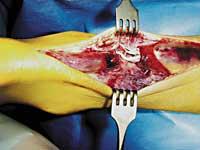
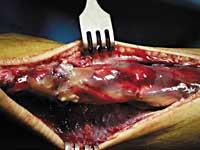

As already indicated, the first therapeutic application of PRGF was in the mouth. Once the tooth was removed, it was tested next to the extraction point. Because new implants need a minimum bone level to remain stable, some patients were given PRGF and others did not, to demonstrate the effect of the preparation. The results were spectacular. In fact, the bone creation time is 6 months and, after using PRGF, this time was reduced to 8 or 10 weeks. Along with these results, the scientists observed that the pain sensation of patients was greatly reduced, since the preparation contains several molecules that relieve inflammations.
Thanks to the collaboration of Mikel Sánchez, the preparation could also be used to treat other alterations. Initially, PRGF was applied to an ulcer with very poor prognosis. A woman was at risk of losing her foot and after giving a weekly preparation, she suffered a noteworthy recovery. Currently, the woman has no trace and has recovered all the functionality of the foot.
From mouth to sports medicine
PRGF has also been frequently tested on bone fractures and has yielded very positive results, but lately sports medicine is revolutionizing the preparation. PRFG has treated the alterations suffered by athletes who practice football, basketball and other sports, such as muscle cracks, breakage of tendons and ligaments, etc.

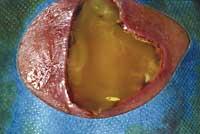
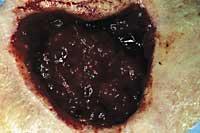

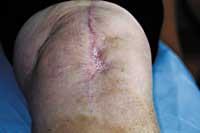
In recent years, the BTI has applied the preparation to injuries suffered by prominent athletes from the Autonomous Community of the Basque Country, such as the bone break of cyclist Joseba Beloki, the tendon break of basketball player Elmer Bennet or the muscle break of the pelotari Olaizola. Satisfactory results.
The use of PRGF in the treatment of muscle cracks is a therapeutic application developed by Mikel Sánchez. As a result of cracks there is a muscle delay and several muscle muinons appear.
Macroscopically representative dolls become more visible when the degree of muscle cracking is greater. In fact, when the muscles are withdrawn a cavity is created that is filled with blood and when the size of this cavity is larger it takes longer to restore the alteration. In this case, the philosophy of treatment is to replace blood thrombus with PRGF. That is, the doctor absorbs the accumulated blood by puncture, where he injects a platelet rich preparation to stimulate muscle regeneration and blood vessel formation throughout the environment.
Future, increased accuracy
The functionality of a platelet rich preparation is demonstrated in various pathological alterations and new studies are being carried out to test other lesions. Sports medicine has also become an effective tool by drastically reducing the recovery times of many injured athletes. In addition, its new applications in surgical cosmetics have extended the use of the preparation to other areas.
Looking ahead to the next few years, however, researchers will have to answer a number of questions still to be answered. For example, what specific functions do platelets have? Or what functional molecules are involved in tissue regeneration and healing?





